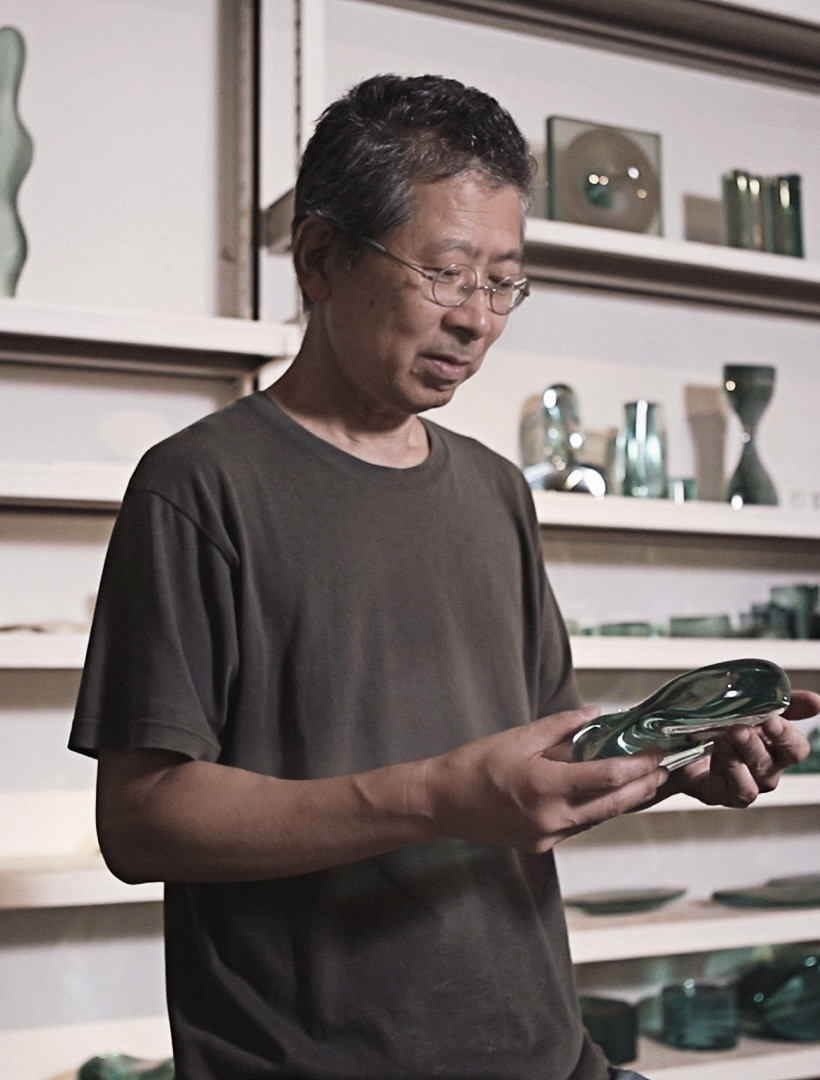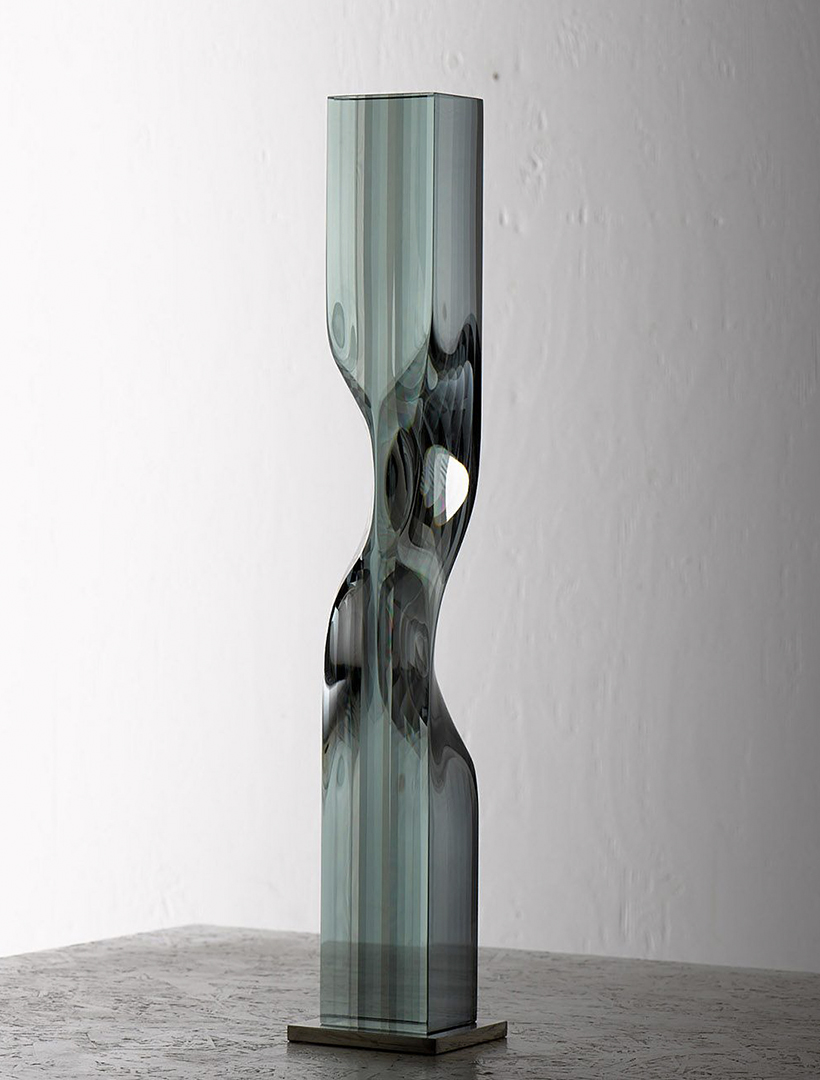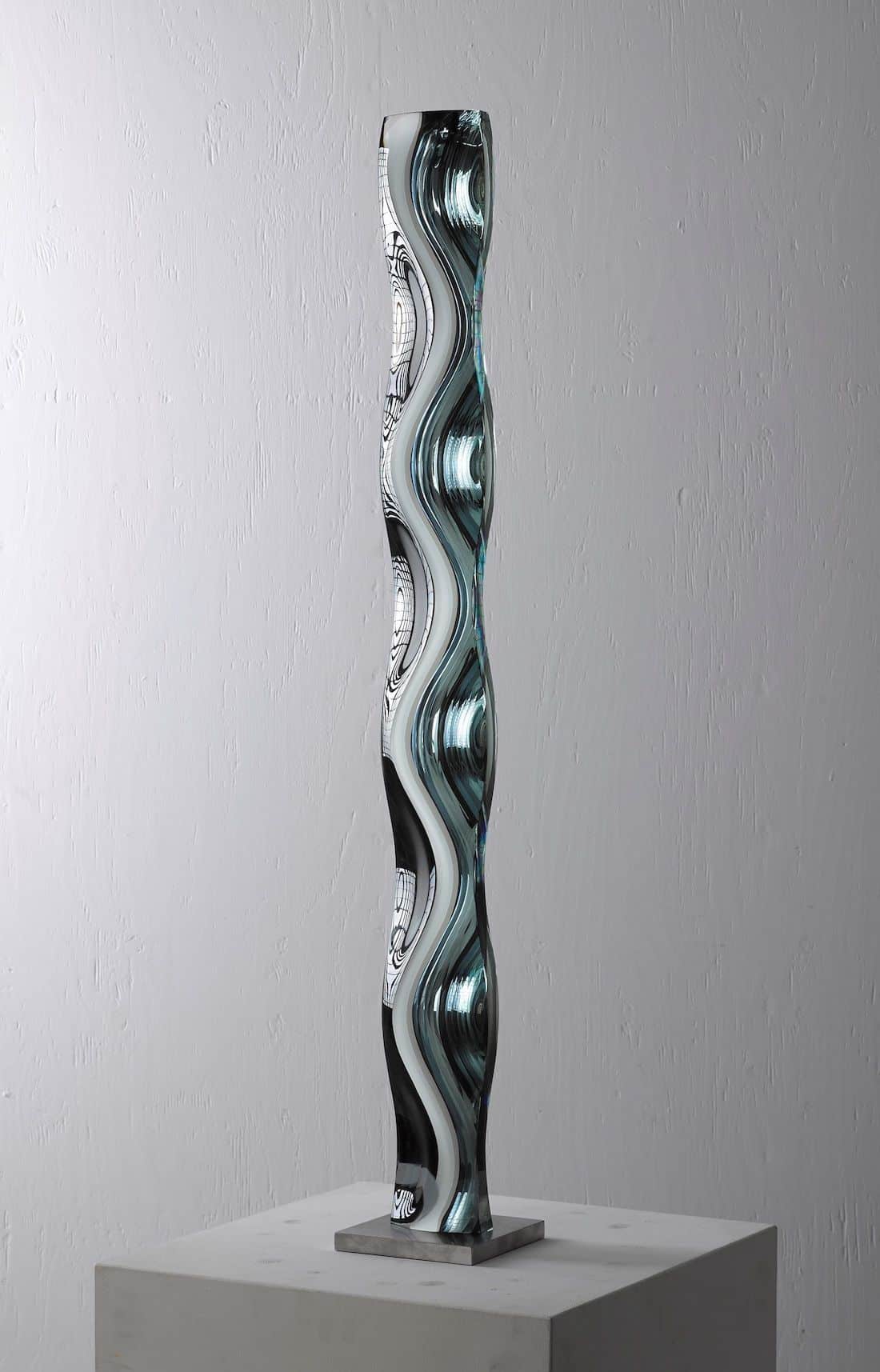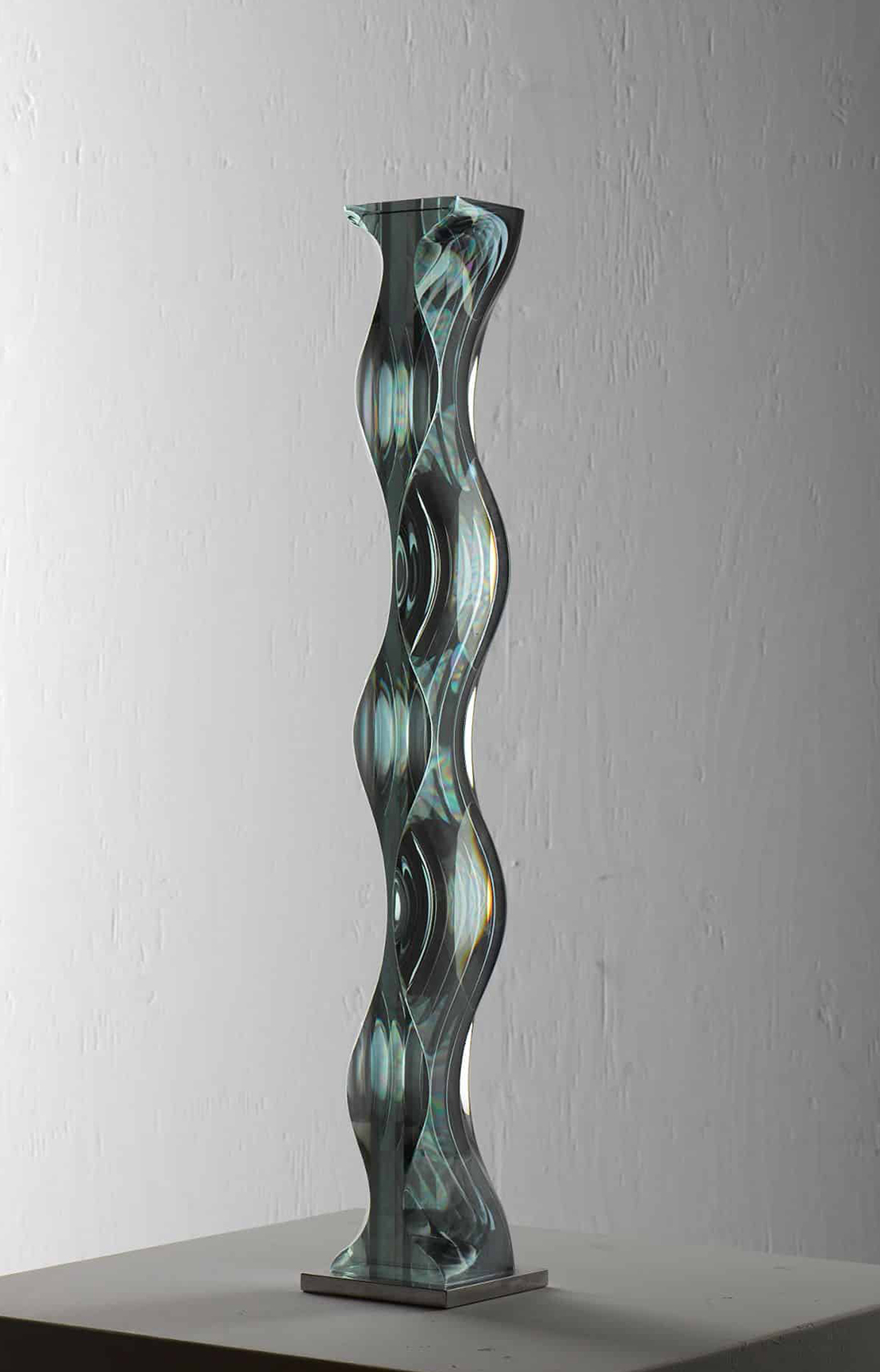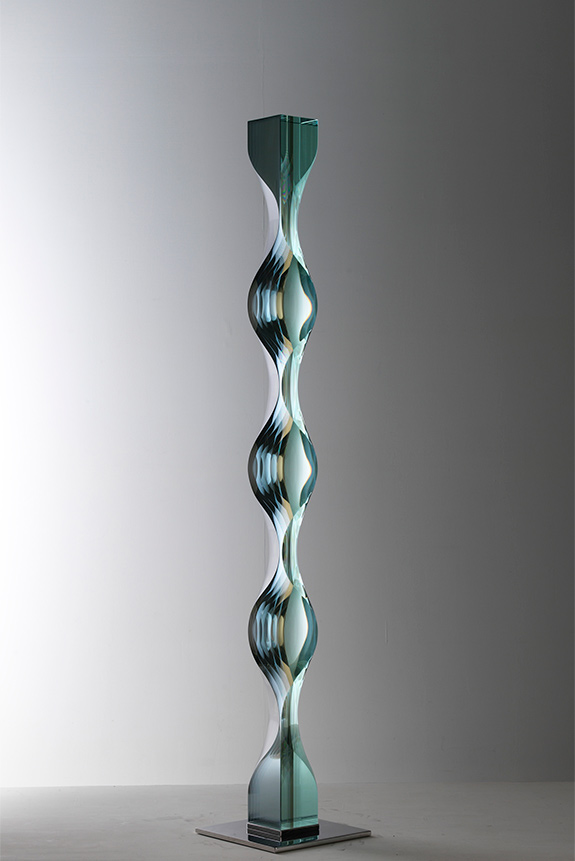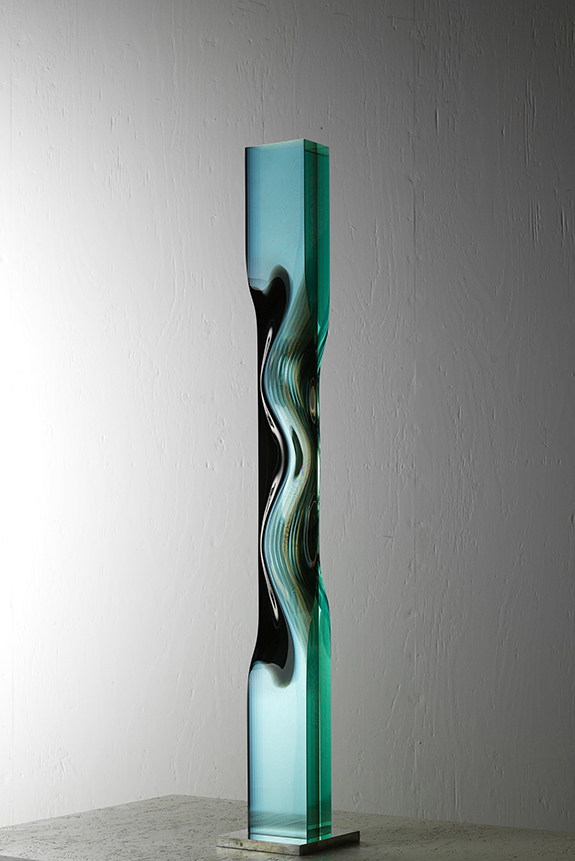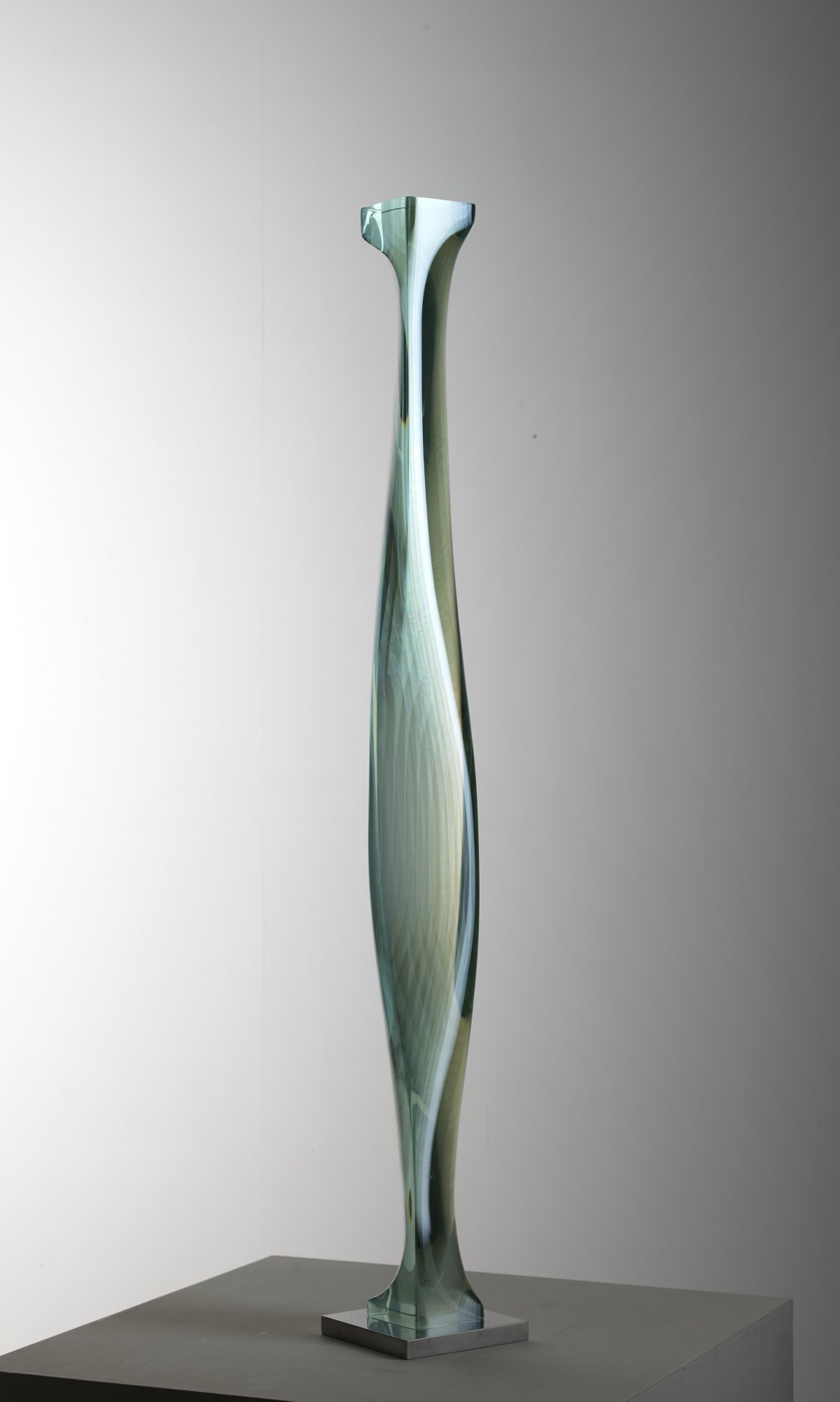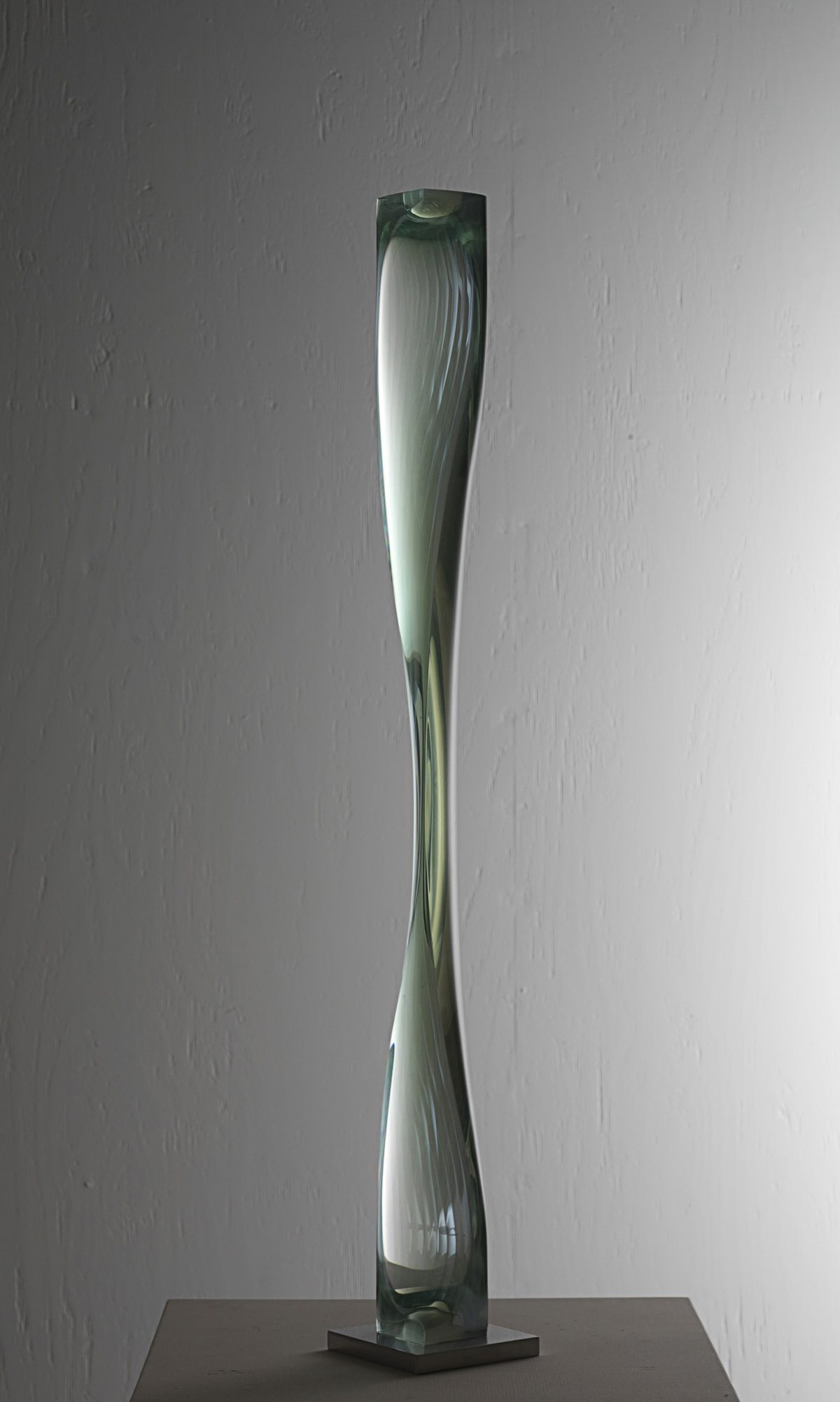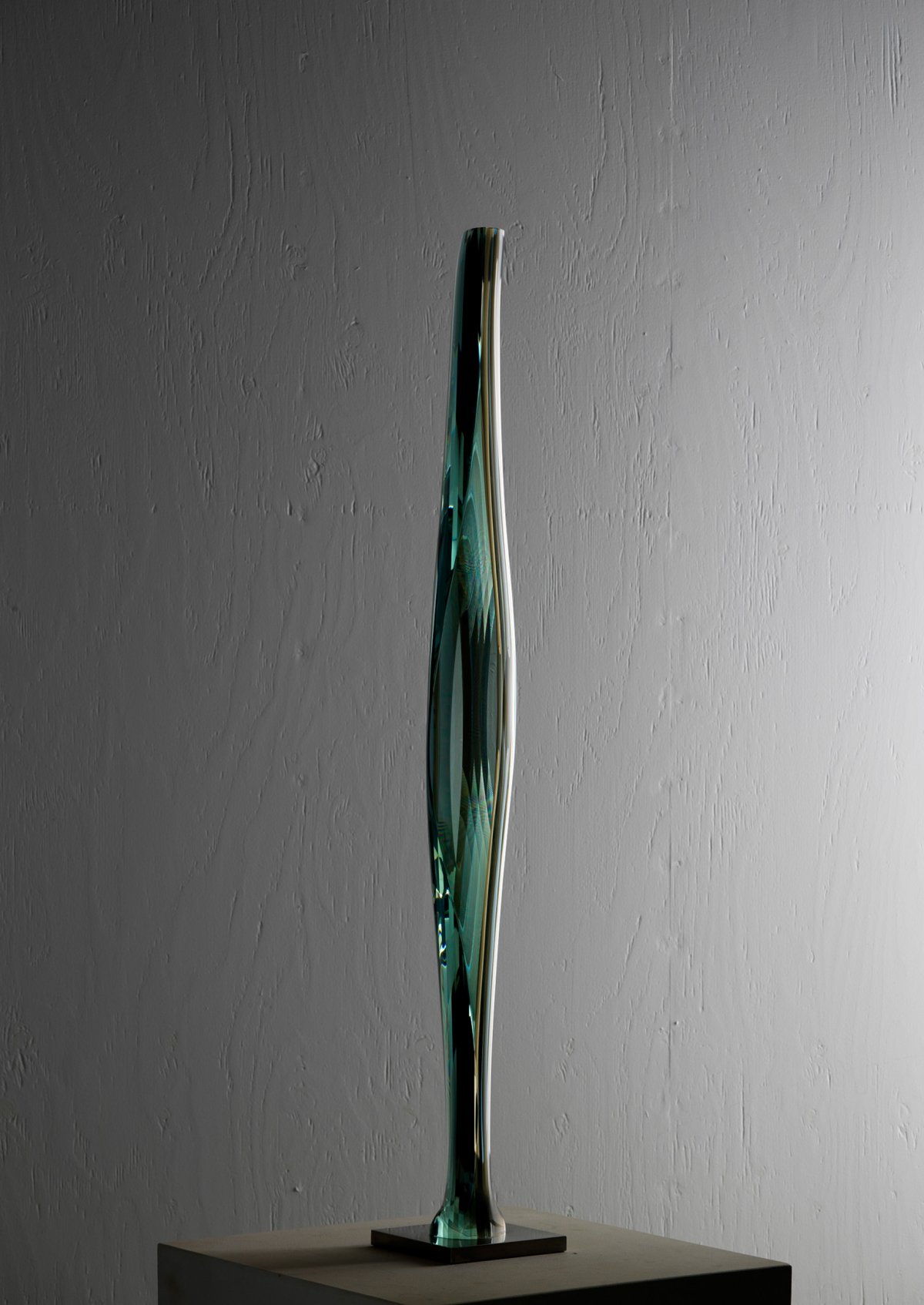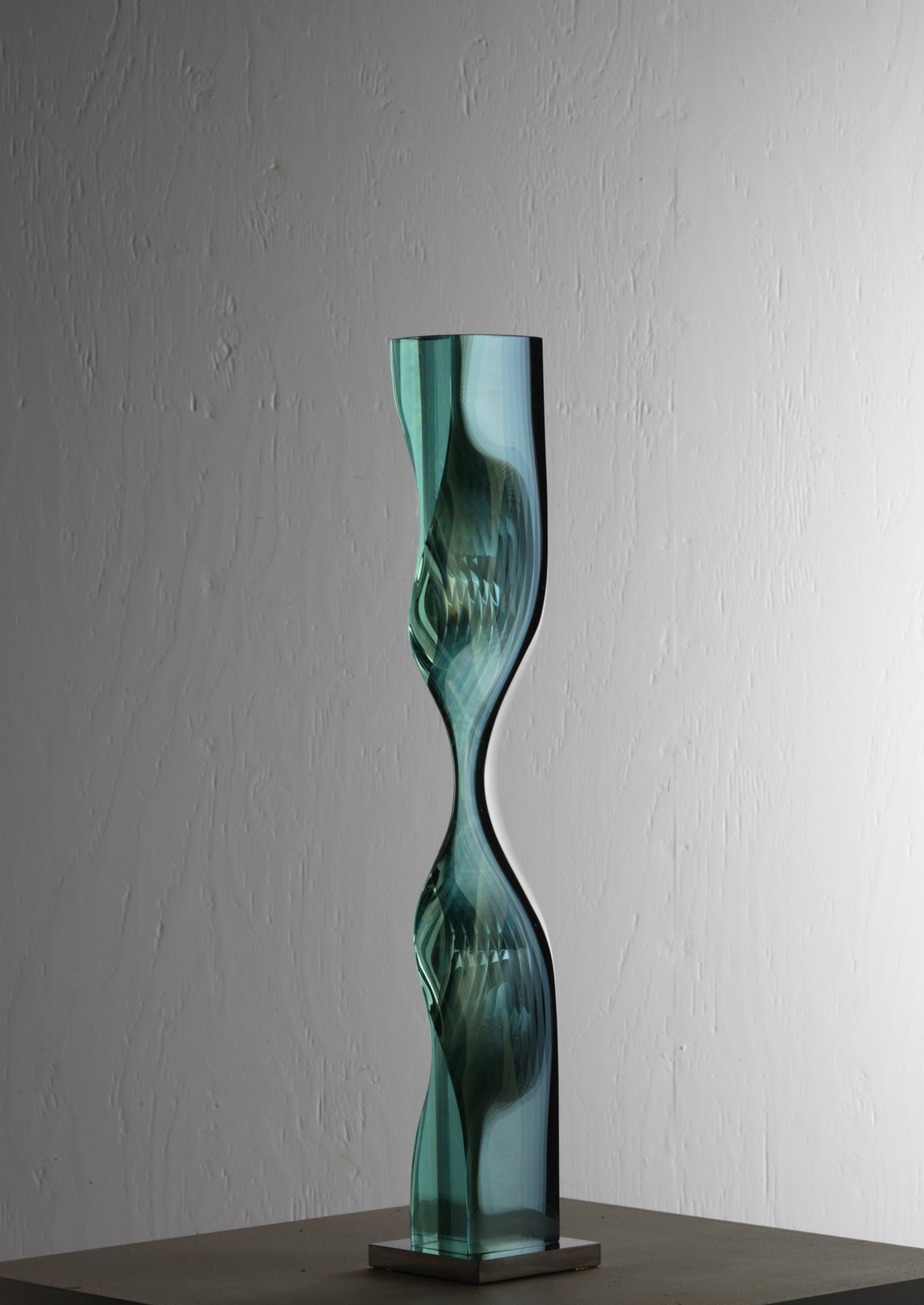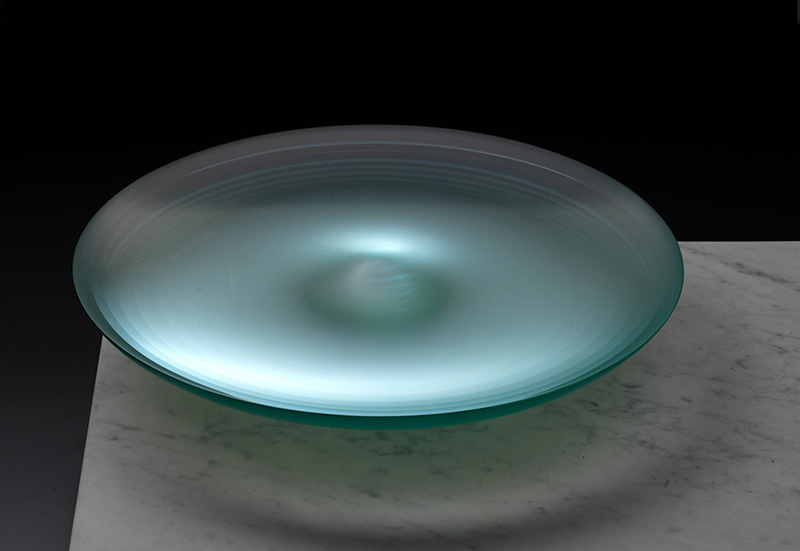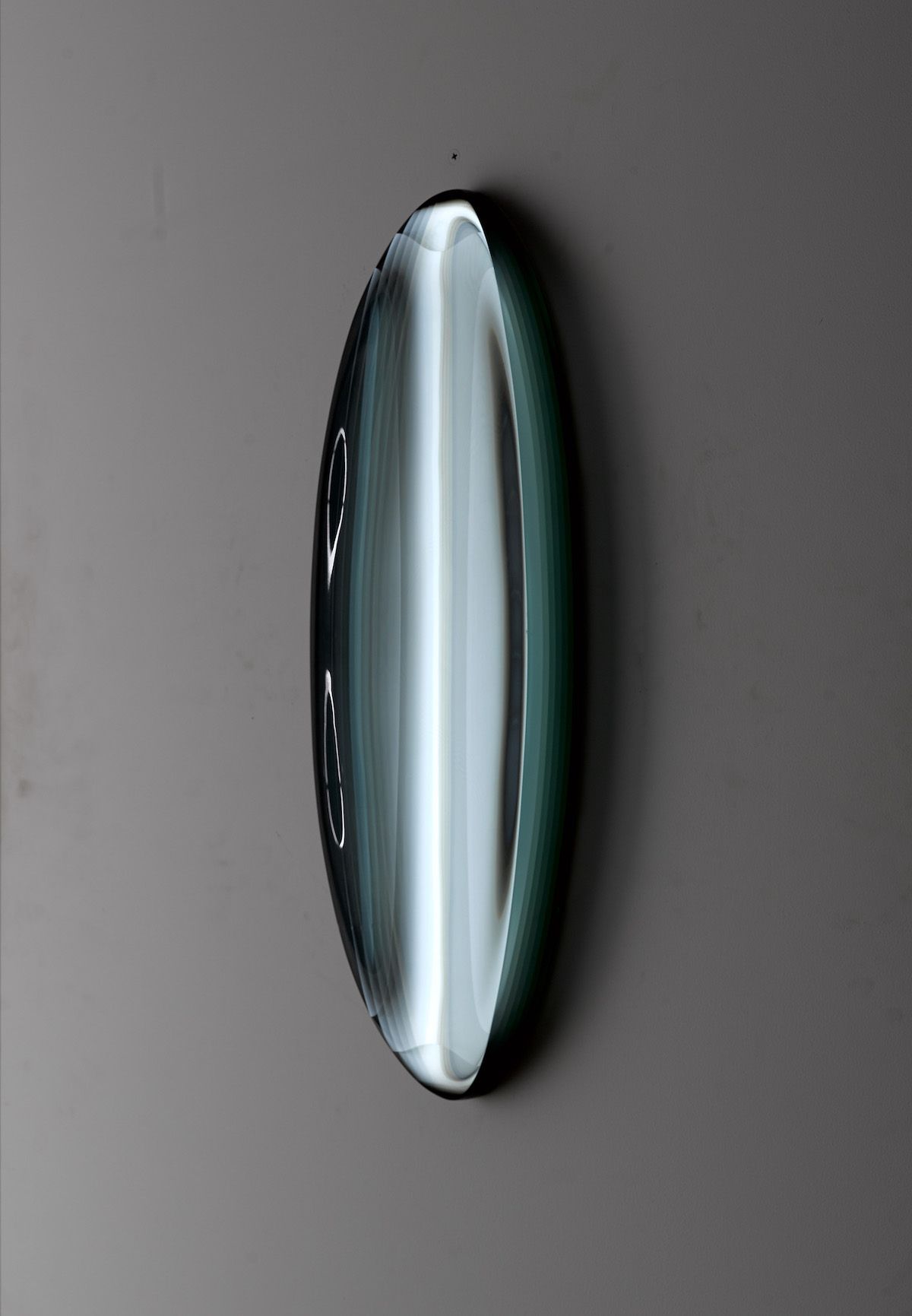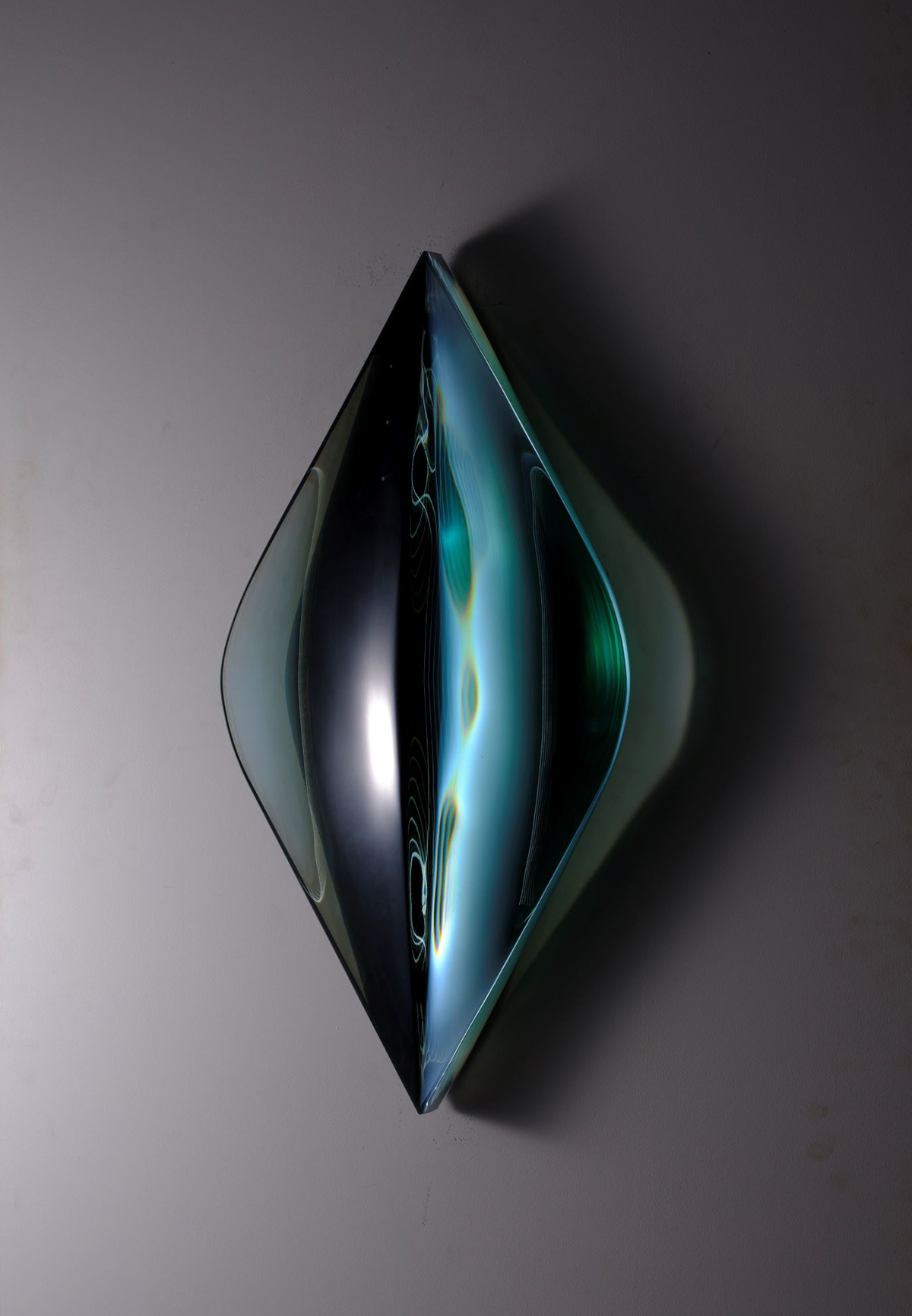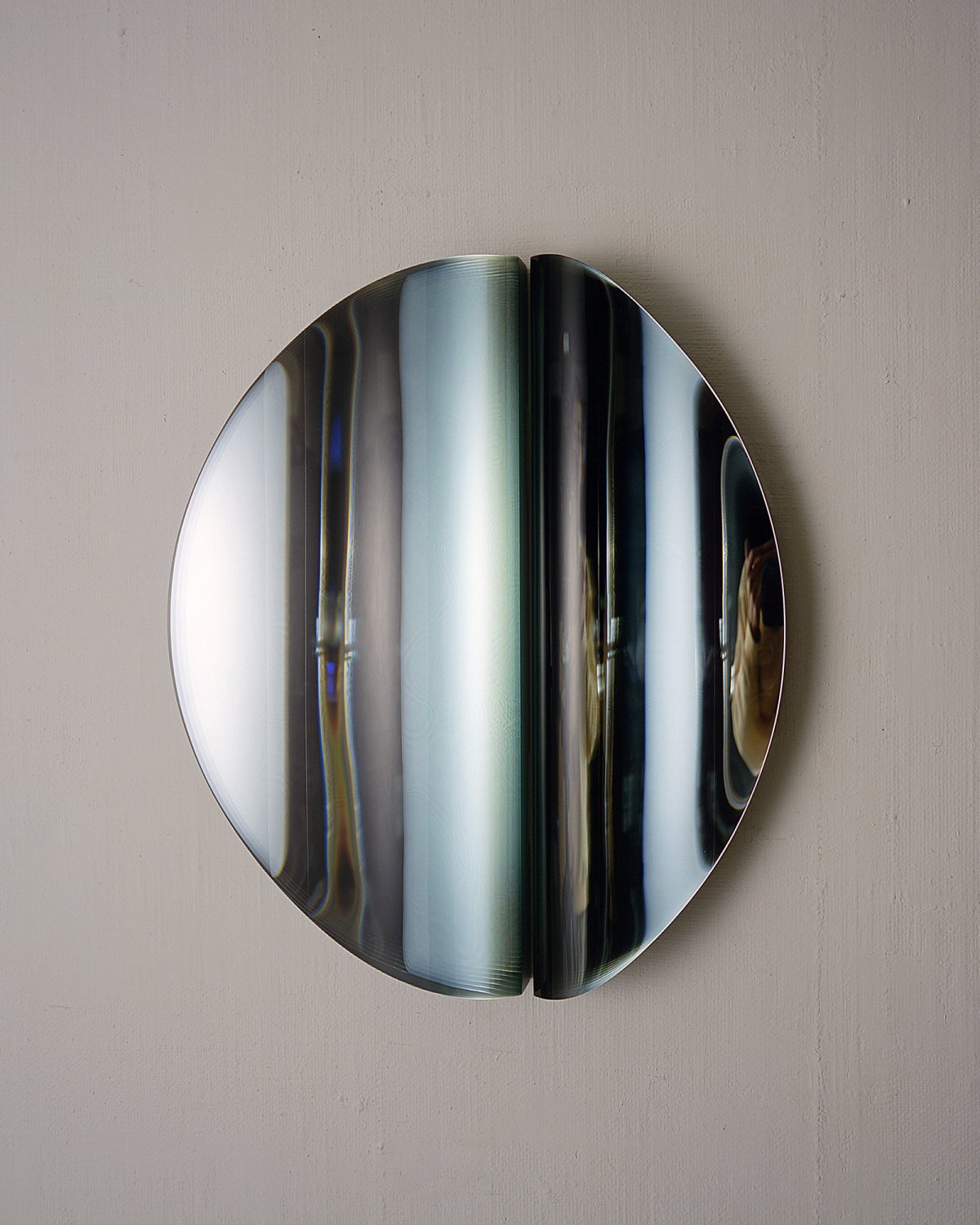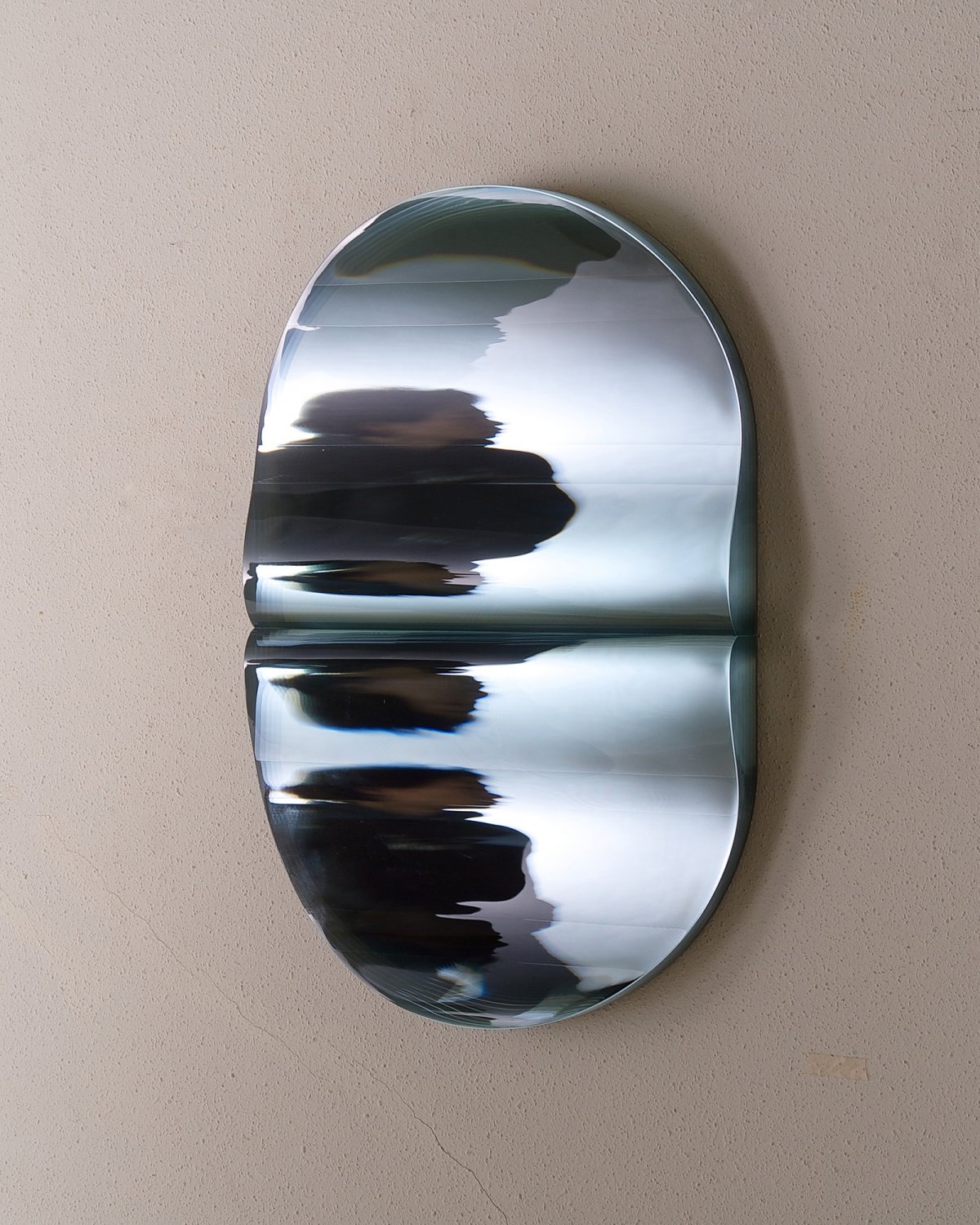
Toshio Iezumi
When shape and texture are well balanced, an ordinary object becomes extraordinary – an artwork.
The Japanese artist Toshio Iezumi creates unique contemporary sculptures using sheets of glass and a technique traditionally used for carving stone. His elegant and fascinating abstract glass sculptures change appearance depending on where they are placed and the position of the viewer. Toshio Iezumi was born in 1954 and currently lives near Tokyo.
Drawn to working with glass, Toshio Iezum enrolled at the Tokyo Glass Art Institute in 1983. There he learned a range of techniques for working with his chosen material: blowing, casting, cutting, enameling, and sandblasting. Two years later, he devoted himself to developing the technique that has characterized his work ever since – using sheets of glass and a technique traditionally used for carving stone. Iezumi’s glass sculptures are the result of a long creative process: there are different stages requiring specialized tools, which have taken a great deal of practice and commitment to master.
The artist starts by preparing the material he has favoured since the start of his career: sheets of glass, between 2mm and 2cm thick. These sheets of glass are harder than crystal glass but less transparent, and slightly green because of their iron content. The contemporary sculptor laminates them, gluing them together with a clear fluid UV glue to create a block. The resulting block of glass has a deeper, more intense shade of green.
He then uses an angle grinder with a diamond blade, normally used for carving stone, to cut the block into his desired shape. The waves and convex and concave shapes are created at this stage. The next step is to smooth out the lines in the surface using six different grades of grinding grits, from roughest to smoothest. Finally, the glass is polished using a felt buff and cerium oxide. This makes the glass sculpture transparent, and completely changes its appearance.
The artist seeks the form first, grinding the glass into shape, and then creates the texture (or rather, a visual distortion) through polishing. He adjusts the form and reworks the texture, repeating the cycle until he finds the perfect balance from which the sculptural artwork emerges.Material and technique are thus the two most significant aspects of his art. He explains: “For my works to have something beyond my intention, I concentrate on grinding glass. In grinding glass, I have a conversation with it through my body: I ask the glass and the glass answers me. I ask the glass with my hands and receive its answer with my eyes. My works are born from such conversation”.
- Art: Toshio Iezumi

